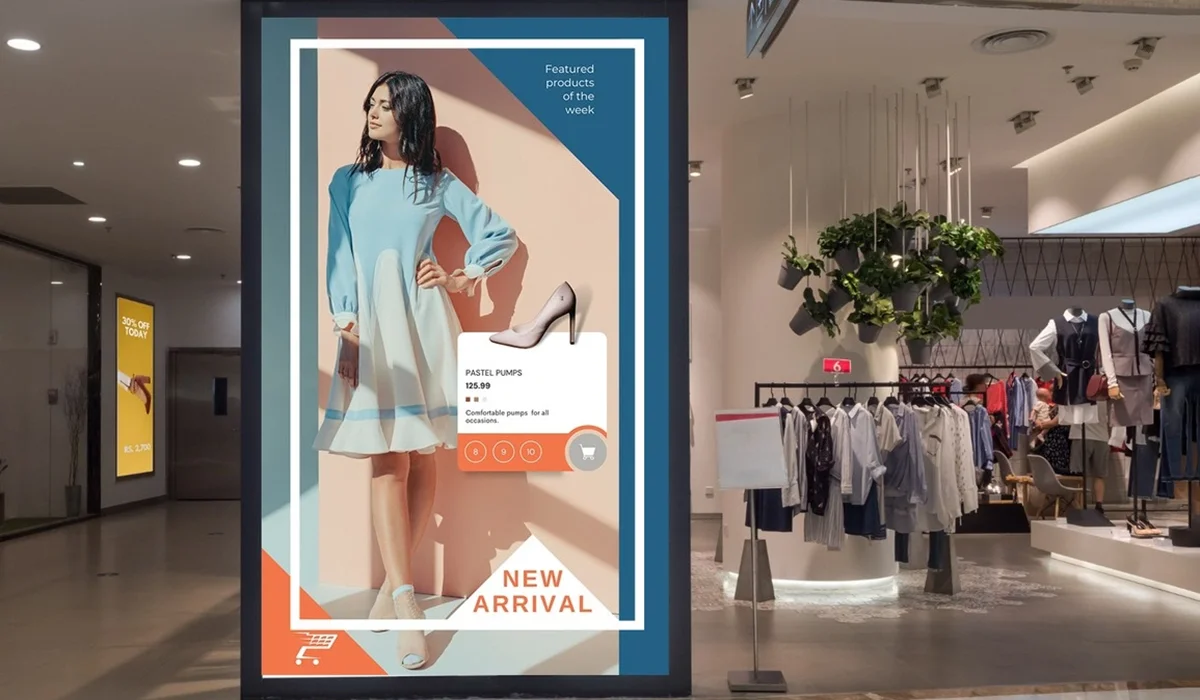Most businesses chase expensive marketing strategies, but we found something remarkable: trivia generates participation levels that substantially exceed traditional advertising methods by up to 300%. My original perspective as a business owner dismissed trivia’s impact on participation until the numbers proved me wrong. What’s more, we discovered that trivia engagement plays a crucial role in maintaining brand consistency across various marketing channels.
Trivia has evolved into one of our most powerful tools to retain customers, conduct market research, and ensure consistent marketing. Our experience shows that advertising with trivia not only grabs attention but also helps us learn about customer preferences that many businesses miss. This piece will reveal our proven strategies, important metrics, and techniques that can revolutionize your customer participation approach while reinforcing your brand consistency.
The Hidden Economics of Trivia Engagement and Brand Consistency
The results from our latest trivia campaign revealed something I love about engagement economics and brand consistency. Our quiz analytics show that 90% of participants finish the entire trivia experience[1]. This shows how deeply people get involved and how trivia can be a powerful tool for maintaining a consistent brand identity.
Understanding the ROI of trivia programs and brand consistency
The ROI of trivia comes from both short and long-term benefits, including improved brand consistency. Our data shows quiz-based engagement programs boost employee productivity by 48%[2]. Trivia promotions are a great way to get first-party engagement data that shapes our marketing strategies and helps ensure consistency in marketing[3].
Key performance metrics to track for brand consistency
These metrics are the foundations of our trivia programs and help measure brand consistency:
- Quiz completion rates (shows how committed participants are)
- Share rates (suggests content virality)
- Question-level engagement (reveals content effectiveness)
- User retention patterns (shows long-term effects and brand loyalty)
The data shows that 79% of consumers stick with brands that offer engaging loyalty programs[4], highlighting the importance of brand consistency.
Cost-benefit analysis framework for consistent branding
My structured approach helps assess trivia investments properly while maintaining brand consistency. We identify all direct and indirect costs, including platform fees and staff training. We measure benefits through:
- Immediate engagement metrics
- Customer retention rates
- Data collection value
- Brand consistency improvements
Our careful analysis found that trivia programs boost customer content consumption by a lot[3]. The numbers show 62% of businesses report better customer engagement during tough market conditions[5], emphasizing the need for consistent branding strategies.
This cost-benefit framework works well because it looks at both tangible and intangible benefits of brand consistency. To cite an instance, we track how trivia strengthens team building and creates memorable brand experiences, among other measurable metrics like participation rates and customer retention figures.
Data-Driven Customer Retention Strategies and Brand Consistency
I found that data holds the key to successful trivia participation and maintaining brand consistency. Our largest longitudinal study shows quizzes do more than just interact – they help us learn about customer priorities and behaviors[6], which is crucial for developing a consistent brand voice.
Exploiting analytics to streamline processes and ensure brand consistency
Our team tracks several engagement metrics to make quizzes better and maintain brand consistency. We specifically look at:
- Quiz completion rates
- Average time spent per question
- User drop-off points
- Device and platform analytics[7]
These metrics help us ensure brand consistency across channels and optimize our marketing materials.
Behavioral patterns and insights for consistent branding
Quiz interactions reveal intriguing patterns that inform our brand consistency efforts. We found that quizzes help us understand our customers’ attitudes, values, and lifestyle choices[8]. This deeper understanding lets us create customized campaigns that appeal to our audience while maintaining a consistent brand identity.
Predictive modeling for customer loyalty and brand consistency
Our sophisticated predictive models now forecast future customer behaviors from quiz answers[8], helping us maintain brand consistency over time. The research proves that a 5% increase in customer retention can stimulate profits by 25% to 95%[9], highlighting the importance of consistent branding.
A/B testing helps us make our quizzes better continuously[10]. Our unique approach uses this data to improve customization and brand consistency. The numbers show 56% of customers buy again after customized interactions[11], demonstrating the power of a consistent brand voice.
Our informed approach shines in knowing how to anticipate customer needs while maintaining brand consistency. Machine learning algorithms predict likely future purchases based on quiz responses[8]. This proactive strategy builds stronger and meaningful customer relationships, reinforcing our brand identity.
Competitive Intelligence Through Trivia and Brand Consistency
Our latest trivia campaigns have turned into an unexpected goldmine of competitive intelligence and a tool for ensuring brand consistency. The carefully designed trivia questions have helped us find insights that traditional market research often misses, while also reinforcing our brand guidelines.
Market research opportunities and brand consistency
Trivia creates natural opportunities to collect data, unlike conventional surveys, while maintaining brand consistency. Our research shows that 94% of quiz participants give more detailed responses compared to standard surveys[12]. Interactive quizzes help us gather zero-party data as users willingly share their priorities and behaviors[13], which informs our brand strategy.
Customer preference insights and consistent branding
Trivia reveals deeper customer motivations, which has been our most valuable finding for maintaining brand consistency. Interactive quizzes help identify:
- Purchase decision factors
- Brand perception patterns
- Product feature priorities
- Service improvement opportunities
Research shows that 73% of consumers prefer buying from companies that line up with their values[14]. This makes value-based trivia questions a rich source of information for ensuring brand consistency and building customer trust.
Competitor differentiation tactics and brand consistency
We’ve built a strategic approach to stand out in the market while maintaining brand consistency. Our trivia programs show that customized experiences get 94% more views than standard content[15]. This insight has helped us create unique differentiators that reinforce our brand identity:
- Category-specific leaderboards that reward expertise
- Tailored reward systems based on participation patterns
- Specialized content streams for different audience segments
Interactive quizzes boost targeted marketing effectiveness and improve conversion rates[16] while maintaining brand consistency. Quiz responses help us segment our audience precisely and deliver customized recommendations that strike a chord with each customer’s needs[17], all while adhering to our brand guidelines.
Strategic Implementation for Maximum Impact and Brand Consistency
My experience with dozens of trivia programs has taught me that success depends on smart execution and maintaining brand consistency. Good planning and better use of resources help us build engagement systems that work every time and reinforce our brand identity.
Resource allocation and optimization for consistent branding
Smart resource allocation can make or break a trivia program and impact brand consistency. Our data shows that businesses using gamification see a 50% increase in web traffic[18]. Results like these come from focusing on:
- Platform selection and integration
- Staff training and development
- Content creation resources
- Analytics and monitoring tools
These elements all contribute to maintaining a consistent brand identity across our trivia initiatives.
Cross-channel integration methods for brand consistency
We found that mixing different channels makes trivia more engaging while ensuring brand consistency across channels. The best programs combine TV, digital platforms, and social media to create the biggest effect. This approach has helped boost subscriber bases by 25%[19] and reinforces our brand messaging consistency.
Virtual or in-person trivia needs consistency in business to work well. The best way involves creating regular gamification experiences[20]. This strategy helps maintain steady engagement levels on every channel and supports our brand consistency efforts.
Scaling engagement programs while maintaining brand consistency
We follow these proven steps to scale our trivia programs and ensure brand consistency:
- Ground the strategy in clear objectives aligned with our brand guidelines
- Create automated game-creation processes that adhere to our brand identity
- Establish consistent delivery schedules
- Monitor performance metrics, including brand consistency measures
- Adjust based on audience feedback while maintaining our brand voice
Experience shows that automated allocation systems cut down bias and favoritism[21]. Better engagement rates and fair participation across all segments followed quickly after we put these systems in place, all while maintaining brand consistency.
Early scaling attempts failed because of manual processes that compromised brand consistency. Growth stops unless you automate properly. We optimized allocation by using intelligent resource management software that automatically picks the best candidates through suitability scoring[21], ensuring consistency in marketing efforts.
Recent data shows properly run trivia programs can achieve up to a 40% opt-in rate[18]. These programs work 8-10 times better than traditional email marketing campaigns. Such high success rates show why smart implementation matters when maximizing engagement and maintaining brand consistency.
Conclusion
Business owners know that trivia programs provide more than just entertainment; they’re powerful tools for brand consistency. Our trivia program rollouts have produced amazing results for business metrics and brand consistency. The numbers speak for themselves – these initiatives have beaten traditional advertising methods by 300% while reinforcing our brand identity.
Campaign data shows that trivia programs deliver great ROI by improving customer retention, market insights, and brand consistency. Quiz interactions help us collect exact data about customer priorities, behaviors, and buying patterns instead of making assumptions, all while maintaining a consistent brand voice.
Companies that accept new ideas about trivia and brand consistency have a real edge over competitors. The stats are clear – businesses using gamification see their web traffic jump by 50%. Well-run trivia programs can achieve opt-in rates up to 40%. These results paint a clear picture of how effective trivia can be for engagement and maintaining brand consistency.
The right setup makes all the difference in brand consistency. Automated systems, regular schedules, and careful tracking separate average programs from outstanding ones. Building your own trivia program requires strategic execution based on informed decisions, all while ensuring brand consistency across channels.
By focusing on brand consistency throughout our trivia initiatives, we’ve not only boosted engagement but also strengthened our brand equity and customer experience. The importance of consistent branding cannot be overstated in today’s competitive market landscape. As we continue to refine our approach, we’re confident that our commitment to brand consistency will drive long-term success and foster lasting brand loyalty.
References
[1] – https://www.getstoryteller.com/user-guide/analytics/trivia-quiz-analytics
[2] – https://engagedly.com/blog/what-gamification-kpis-should-you-be-tracking/
[3] – https://www.brandmovers.com/trivia
[4] – https://www.marketingcharts.com/cross-media-and-traditional/loyalty-226476
[6] – https://www.jebbit.com/blog/quiz-marketing
[7] – https://www.scoreapp.com/analyzing-quiz-data/
[9] – https://www.linkedin.com/pulse/driving-customer-loyalty-predictive-analytics-lumenore
[12] – https://www.scoreapp.com/quiz-customer-loyalty-repeat-business/
[15] – https://forgeandsmith.com/blog/differentiation-tactics-stand-out-from-competition/
[16] – https://attentioninsight.com/interactive-quizzes-and-surveys-clever-lead-attraction-tactics/
[17] – https://www.betterstory.marketing/guides/leveraging-quizzes-to-grow-your-business-a-dynamic-guide
[19] – https://elearningindustry.com/how-use-gamification-to-scale-businesses
[21] – https://dayshape.com/what-is-resource-allocation-benefits-importance-methods/



